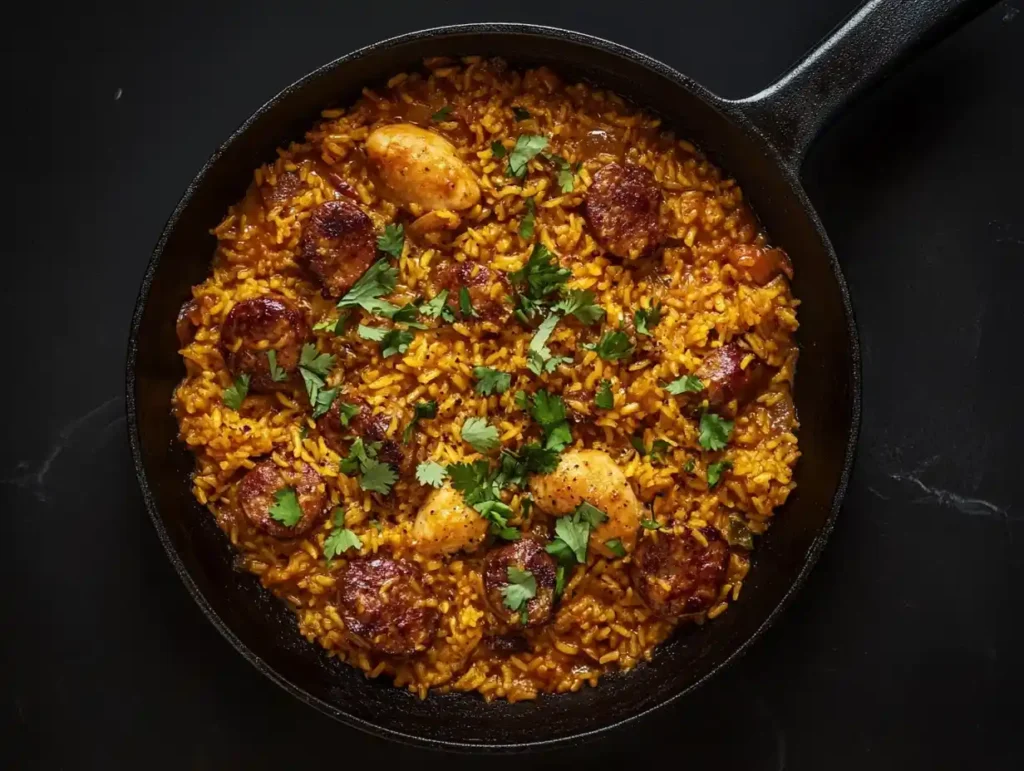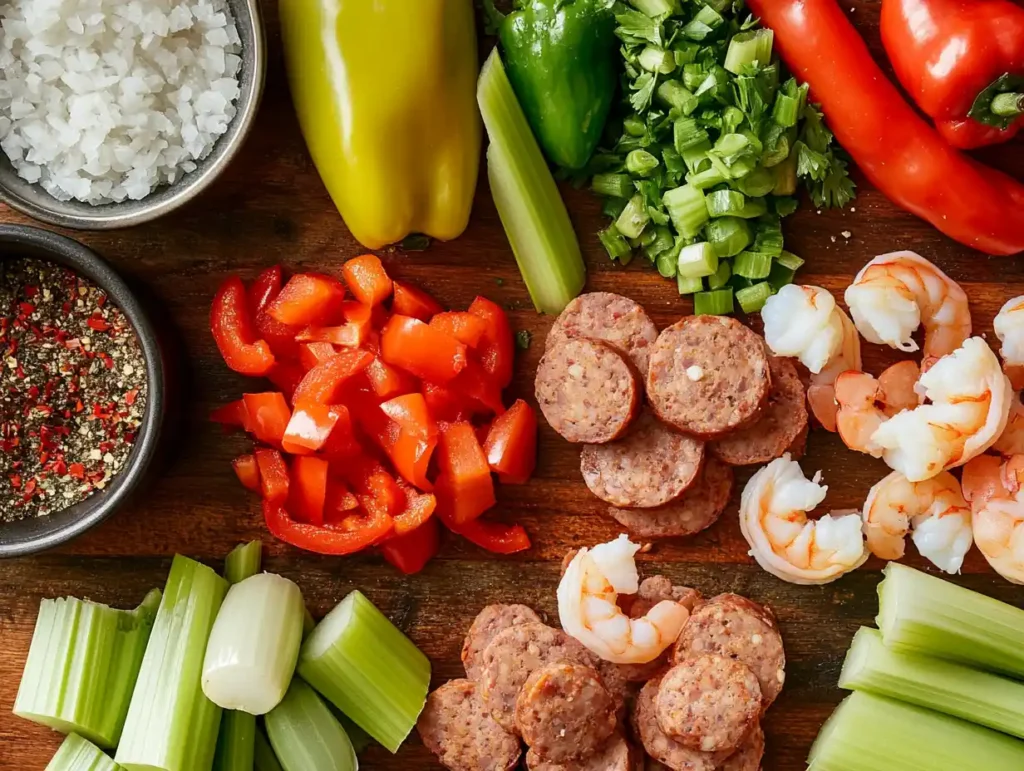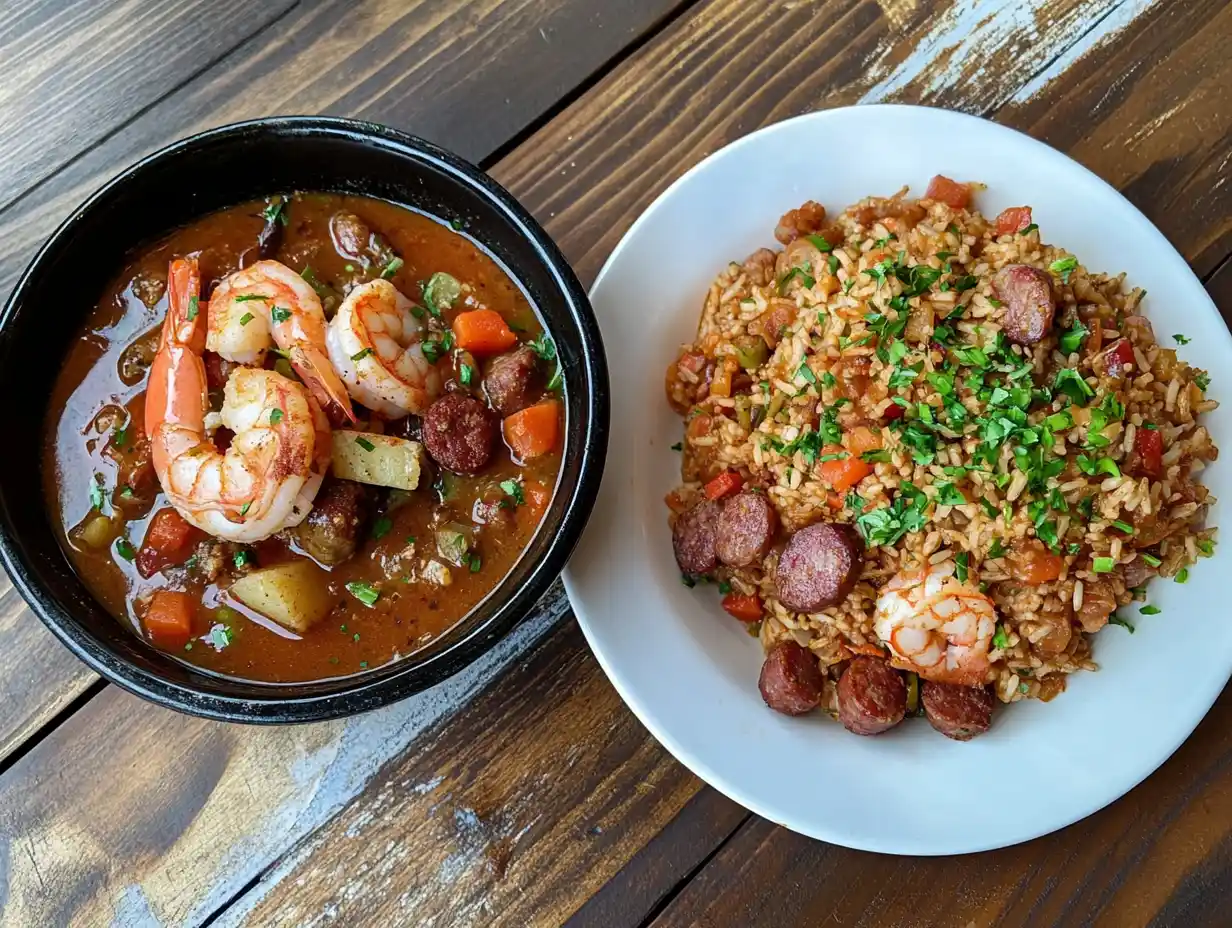Southern cuisine is renowned for its rich flavors, hearty dishes, and a deep connection to culture and tradition. Among the many iconic dishes from the region, gumbo and jambalaya stand out as two culinary heavyweights that showcase the unique flavors of Louisiana. Although these dishes share common roots and ingredients, they have distinct characteristics that set them apart.
The allure of gumbo and jambalaya lies in their versatility, bold seasonings, and ability to bring people together. Whether enjoyed at a family gathering or a local festival, both dishes reflect the diverse cultural influences that define Southern cooking. However, many food enthusiasts and first-time tasters often wonder: is there a difference between gumbo and jambalaya? This article explores the history, preparation, and cultural significance of these beloved dishes, highlighting their similarities and differences.
What is Gumbo?
Gumbo is a hearty stew that comes from Louisiana, blending African, French, Spanish, and Native American cooking styles. It brings together a variety of flavors, showcasing the region’s rich cultural history. People often make gumbo with meat or seafood, a thickener, and the “Holy Trinity” of vegetables: onions, celery, and bell peppers.
History and Origin
Gumbo’s roots trace back to the 1700s when enslaved Africans introduced okra to Louisiana. The word “gumbo” comes from the West African name for okra, “ki ngombo.” French settlers added roux—a mix of flour and fat—to the dish as a thickening base. Over the years, Creole and Cajun communities shaped gumbo into the flavorful dish it is today.
Key Ingredients and Preparation
Most gumbo recipes use a rich broth thickened with roux, okra, or file powder (ground sassafras leaves). People often add chicken, sausage, shrimp, or crab for protein. Spices like paprika, cayenne, and thyme give gumbo its bold taste.
To prepare gumbo, cooks start by making a roux, which involves stirring flour and fat until it turns golden or dark brown. They then cook the vegetables and meat before adding stock and seasonings. Finally, the gumbo simmers until the flavors combine. Gumbo is usually served over rice, making it a filling and satisfying meal.
Different Types of Gumbo
Gumbo has many variations that depend on local ingredients or preferences. Seafood gumbo is popular in coastal areas, while chicken and sausage gumbo is more common inland. Some versions use file powder for a unique flavor and to help thicken the stew. No matter the variation, gumbo always delivers comfort and bold flavors.
What is Jambalaya?

Jambalaya is a flavorful rice-based dish that also originates from Louisiana. It combines ingredients like meat, seafood, vegetables, and spices, all cooked together in one pot. Jambalaya is a vibrant dish with influences from Spanish paella, French cuisine, and West African traditions. Unlike gumbo, which uses a stew-like base, jambalaya centers around seasoned rice that absorbs all the rich flavors during cooking.
History and Roots
The origins of jambalaya date back to the 18th century when Spanish settlers in Louisiana sought to recreate paella using locally available ingredients. Due to the lack of saffron, they substituted it with tomatoes, spices, and herbs. Over time, the dish evolved, reflecting Creole and Cajun culinary traditions. Today, jambalaya is celebrated as one of Louisiana’s most iconic dishes, often served at festivals and gatherings.
Key Ingredients and Preparation
Jambalaya relies on a simple yet flavorful mix of ingredients. Cooks usually start with meat (like chicken, sausage, or ham), seafood (such as shrimp or crawfish), or a combination of both. Vegetables like onions, celery, and bell peppers—the “Holy Trinity”—form the base, while rice serves as the centerpiece. Bold seasonings, including cayenne pepper, thyme, and paprika, bring depth to the dish.
To make jambalaya, cooks sauté the meat and vegetables before adding uncooked rice, broth, and seasonings. The dish simmers until the rice absorbs all the liquid, creating a flavorful, hearty meal. Unlike gumbo, jambalaya does not use a roux or okra, which contributes to its drier texture.
Creole vs. Cajun Jambalaya
Jambalaya comes in two main styles: Creole and Cajun. Creole jambalaya, also known as “red jambalaya,” includes tomatoes, which give it a reddish color. It is more common in New Orleans and coastal areas. On the other hand, Cajun jambalaya, known as “brown jambalaya,” omits tomatoes and relies on browned meats to create a deep, smoky flavor. This version is popular in rural areas of Louisiana.
Both styles deliver bold and satisfying flavors, but their differences reflect the unique culinary traditions of the regions that created them.
Key Differences Between Gumbo and Jambalaya

While gumbo and jambalaya share a common heritage and use similar ingredients, they differ significantly in preparation, texture, and presentation. Understanding these differences can help you appreciate each dish’s unique qualities.
Preparation Style
The most noticeable difference lies in how each dish is made. Gumbo starts as a stew, with a base of roux, stock, and vegetables. The thickening agent—either okra, roux, or file powder—plays a crucial role in creating gumbo’s rich, soup-like texture. Ingredients like meats or seafood simmer in the broth to absorb the flavors.
Jambalaya, on the other hand, is a one-pot rice dish. Cooks sauté the proteins and vegetables before adding uncooked rice and broth. As the mixture simmers, the rice soaks up the flavors, resulting in a dish where the ingredients blend together seamlessly.
Texture and Consistency
Another clear distinction lies in the texture of the two dishes. Gumbo has a soupy consistency and is typically served over rice, which is cooked separately. The broth is often thickened to create a smooth, hearty stew.
In contrast, jambalaya incorporates rice into the cooking process, resulting in a drier texture. The rice becomes the star of the dish, fully absorbing the spices and flavors from the meats and vegetables.
Cooking Methods and Times
Gumbo usually takes longer to prepare due to the process of making a roux. Achieving the perfect roux—whether light, medium, or dark—requires patience and constant stirring over low heat. Additionally, gumbo often simmers for hours to develop its deep flavors.
Jambalaya, by comparison, cooks faster. Once the ingredients are in the pot, the dish only requires about 30–45 minutes of simmering. This makes jambalaya a quicker option for those craving a hearty Southern meal.
Flavor Profile Comparison
The flavors of gumbo and jambalaya also set them apart. Gumbo delivers a bold, complex taste with a savory broth enhanced by layers of seasoning and the smoky richness of the roux. Depending on the recipe, gumbo can take on the distinct flavors of seafood, sausage, or chicken.
Jambalaya offers a different experience, with its rice acting as the main carrier of flavor. The spices in jambalaya often include cayenne, thyme, and paprika, creating a well-seasoned but less liquid-heavy dish. The proteins and vegetables blend into the rice, creating a unified, hearty flavor.
Cultural Significance
Gumbo and jambalaya are more than just delicious meals—they are symbols of Louisiana’s rich cultural heritage and the vibrant history of the Southern United States. These dishes represent the blending of diverse culinary traditions and have become staples of celebrations, festivals, and family gatherings.
Gumbo’s Role in Louisiana Culture
Gumbo embodies the melting pot of Louisiana culture. The dish reflects African, French, Spanish, and Native American influences, and it continues to evolve with modern adaptations. Many families pass down their gumbo recipes through generations, making it a cherished part of personal and cultural identity.
The dish is a centerpiece at events like Mardi Gras, where locals and tourists alike indulge in hearty bowls of gumbo. Additionally, gumbo cook-offs are popular at food festivals, showcasing regional variations and celebrating culinary creativity. For many, gumbo signifies comfort, warmth, and community, especially when shared during holidays or special occasions.
Jambalaya’s Role in Community and Celebration
Jambalaya also holds a special place in Louisiana culture. Its simplicity and ability to feed large groups make it a popular choice for gatherings such as weddings, family reunions, and local festivals. The dish’s flexibility allows cooks to use what’s on hand, emphasizing resourcefulness—a trait deeply rooted in Southern traditions.
The annual Jambalaya Festival in Gonzales, Louisiana, highlights the dish’s importance. Known as the “Jambalaya Capital of the World,” Gonzales celebrates this one-pot meal with cooking competitions, live music, and community events. Like gumbo, jambalaya brings people together, reinforcing its status as a symbol of Southern hospitality.
A Shared Legacy
Although gumbo and jambalaya differ in preparation and texture, they both represent the resilience and creativity of Louisiana’s people. These dishes are reminders of how food can connect communities, preserve traditions, and adapt to new influences. Whether served at a bustling festival or a quiet family dinner, gumbo and jambalaya continue to honor the history and spirit of the region.
Cooking Tips and Popular Pairings
Mastering gumbo and jambalaya requires attention to detail, patience, and a few insider tips. While each dish has its unique cooking methods, the right techniques can help you create authentic and flavorful meals. Additionally, pairing these dishes with complementary sides and beverages can elevate the dining experience.
Tips for Perfect Gumbo
- Focus on the Roux:
The roux is the foundation of gumbo, so it’s crucial to get it right. Use equal parts flour and fat (oil, butter, or lard) and stir constantly over low heat until it reaches the desired color—ranging from light blonde for milder gumbos to dark chocolate for richer ones. Avoid burning it, as this can ruin the dish. - Use Fresh Ingredients:
Opt for fresh, high-quality proteins and vegetables to enhance the flavor of your gumbo. Whether you’re using shrimp, chicken, sausage, or crab, ensure the ingredients are as fresh as possible. - Season Gradually:
Layer your seasonings during the cooking process. Start with Cajun or Creole seasoning blends, and adjust the flavors with salt, pepper, and cayenne toward the end. - Let It Simmer:
Allow the gumbo to simmer for at least an hour, or longer if possible. This helps the flavors meld together and creates a deeper, more satisfying taste. - Serve with the Right Rice:
Always cook the rice separately and serve it alongside or under the gumbo. Long-grain white rice is the traditional choice, as it absorbs the broth without becoming mushy.
Tips for Perfect Jambalaya
- Brown the Meat:
For richer flavor, take the time to brown your meat (chicken, sausage, or pork) before adding other ingredients. This creates a depth of flavor that enhances the dish. - Toast the Rice:
After sautéing the vegetables, stir the rice in with the seasoning before adding the broth. Toasting the rice slightly helps it absorb flavors better and prevents it from becoming mushy. - Choose the Right Liquid:
Use flavorful stock or broth instead of water. Chicken or seafood stock works best, depending on the protein used in your jambalaya. - Monitor the Cooking Time:
Keep an eye on the rice while it cooks. Stir occasionally to prevent sticking, but avoid over-stirring, as this can break the grains and make the dish gummy. - Use a Heavy Pot:
A sturdy, heavy-bottomed pot or Dutch oven distributes heat evenly and prevents the rice from burning during cooking.
Perfect Pairings for Gumbo and Jambalaya
- For Gumbo:
- Cornbread: The slightly sweet and crumbly texture pairs perfectly with the rich, savory broth of gumbo.
- Potato Salad: A creamy potato salad balances the bold, spicy flavors of gumbo.
- Cold Beer: A light or amber beer complements the smoky, complex spices in the dish.
- For Jambalaya:
- Crusty Bread: A slice of French bread or a warm baguette works well for scooping up the flavorful rice.
- Green Salad: A fresh, crisp salad adds a refreshing contrast to the hearty jambalaya.
- Iced Tea or Lemonade: These classic Southern beverages balance the spices with their cooling effect.
Health Considerations
Gumbo and jambalaya are flavorful and satisfying, but they can also be quite rich. With a few adjustments, you can enjoy these dishes while keeping them in line with your dietary preferences or health goals. Understanding their nutritional profiles and ingredient options can help you make informed choices.
Nutritional Differences
- Calorie Count:
Gumbo, especially seafood-based varieties, tends to be lower in calories compared to jambalaya. However, the calorie count can increase depending on the type and amount of meat, sausage, and rice added. Jambalaya, as a rice-focused dish, contains more carbohydrates and tends to have a higher calorie content. - Fat Content:
The roux in gumbo adds fat to the dish, which contributes to its rich flavor. Using healthier fats like olive oil or reducing the amount of sausage can help lower the fat content. Jambalaya may contain less fat overall, but this depends on the type of proteins used and whether they are cooked with additional oils or fats. - Sodium Levels:
Both dishes can be high in sodium due to the use of seasoning blends, broths, and sausages. Opting for low-sodium broth and reducing added salt can make these dishes healthier without sacrificing flavor.
Adapting for Dietary Preferences
- Low-Sodium Options:
Use fresh herbs, garlic, and spices to enhance flavor instead of relying on salt-heavy Cajun or Creole seasoning blends. Homemade stock allows you to control the sodium content. - Vegan and Vegetarian Versions:
Both gumbo and jambalaya can be adapted for plant-based diets. For gumbo, substitute the meat and seafood with hearty vegetables like mushrooms, okra, and zucchini. In jambalaya, you can replace meat with plant-based sausage or chickpeas while keeping the same bold seasoning. - Gluten-Free Alternatives:
Traditional gumbo relies on a flour-based roux, but gluten-free flour works just as well. Jambalaya is naturally gluten-free when made with rice, so no major changes are needed. - Low-Calorie Swaps:
To reduce calories, opt for lean proteins like skinless chicken breast or turkey sausage. In jambalaya, try using cauliflower rice instead of traditional rice for a lighter version.
Portion Control and Balance
Due to their rich and hearty nature, gumbo and jambalaya are best enjoyed in moderate portions. Pairing them with lighter sides, such as steamed vegetables or a salad, can create a more balanced meal. You can also divide leftovers into smaller servings to enjoy over several meals, reducing the temptation to overeat.
Frequently Asked Questions (FAQs)
Here are concise answers to common questions about gumbo and jambalaya:
What Are the Key Differences Between Gumbo and Jambalaya?
Gumbo is a stew served over rice, with a thicker consistency achieved using a roux, okra, or file powder. Jambalaya is a one-pot rice dish where the rice absorbs all the liquid and spices, resulting in a drier texture.
Which Dish Is Easier for Beginners?
Jambalaya is easier for beginners because it’s a one-pot dish with fewer steps. Gumbo requires making a roux, which takes practice to master.
Can These Dishes Be Made Vegetarian?
Yes, you can make both dishes vegetarian. Substitute meat with vegetables or plant-based proteins, and use bold spices to maintain flavor.
What Spices Are Essential?
Both dishes use Cajun or Creole seasonings, including paprika, cayenne, garlic powder, thyme, and oregano. File powder is unique to gumbo, while jambalaya relies on well-seasoned rice.
Conclusion
Gumbo and jambalaya are iconic Louisiana dishes that showcase the region’s rich cultural blend and bold flavors. Gumbo offers a savory, stew-like experience with its smoky roux or okra base, while jambalaya brings hearty, spiced rice to the forefront in a one-pot meal. Both dishes represent the creativity and tradition of Southern cooking, making them symbols of comfort, community, and culinary heritage.
For more Cajun and Creole inspiration, check out our guide to Jambalaya with Cheese or discover What Goes Good on Jambalaya. If you’re interested in hearty soups, don’t miss our Soup Bone Guide for making rich, flavorful broths.

